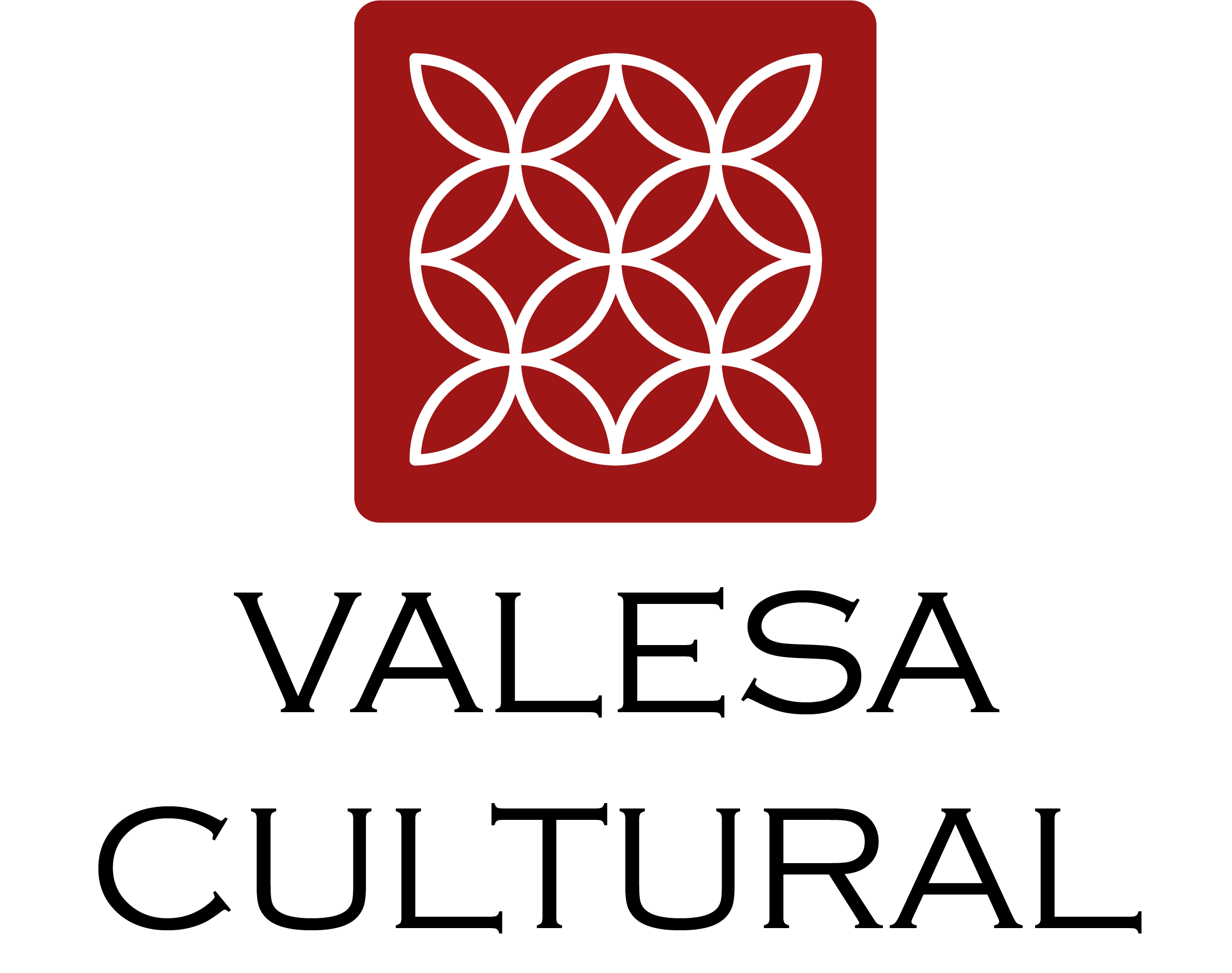There are countless food markets throughout Spain, many of which have existed for decades or even more than a century. Each market reflects the unique flavors and traditions of its region, offering visitors an authentic taste of Spain’s rich culinary heritage. However nowadays, it can be difficult to distinguish the authentic spots from the tourist traps.
Madrid’s San Miguel Market is located in the heart of the old town, but it fills up quickly so you can see it quickly but good luck finding a seat there. We suggest going to La Paz market instead for the best qualities and variety. This market opened in 1882 in a modernist style building and sells a variety of local foods, produce, and gourmet goods too. Stop at one of the small restaurants inside for a tapa de tortilla and soak up the atmosphere.
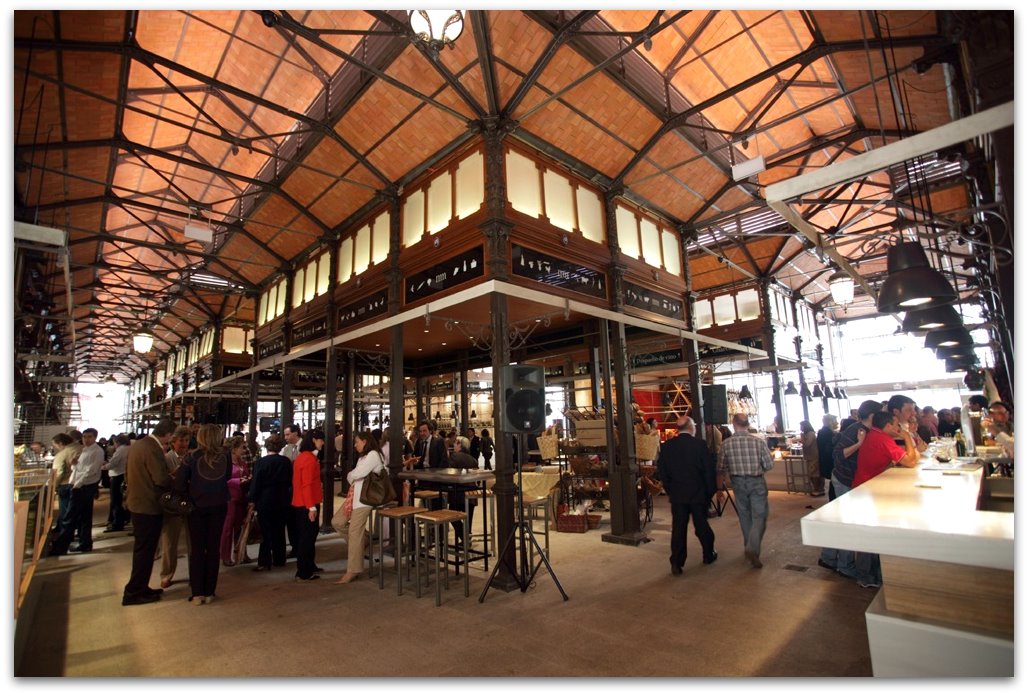
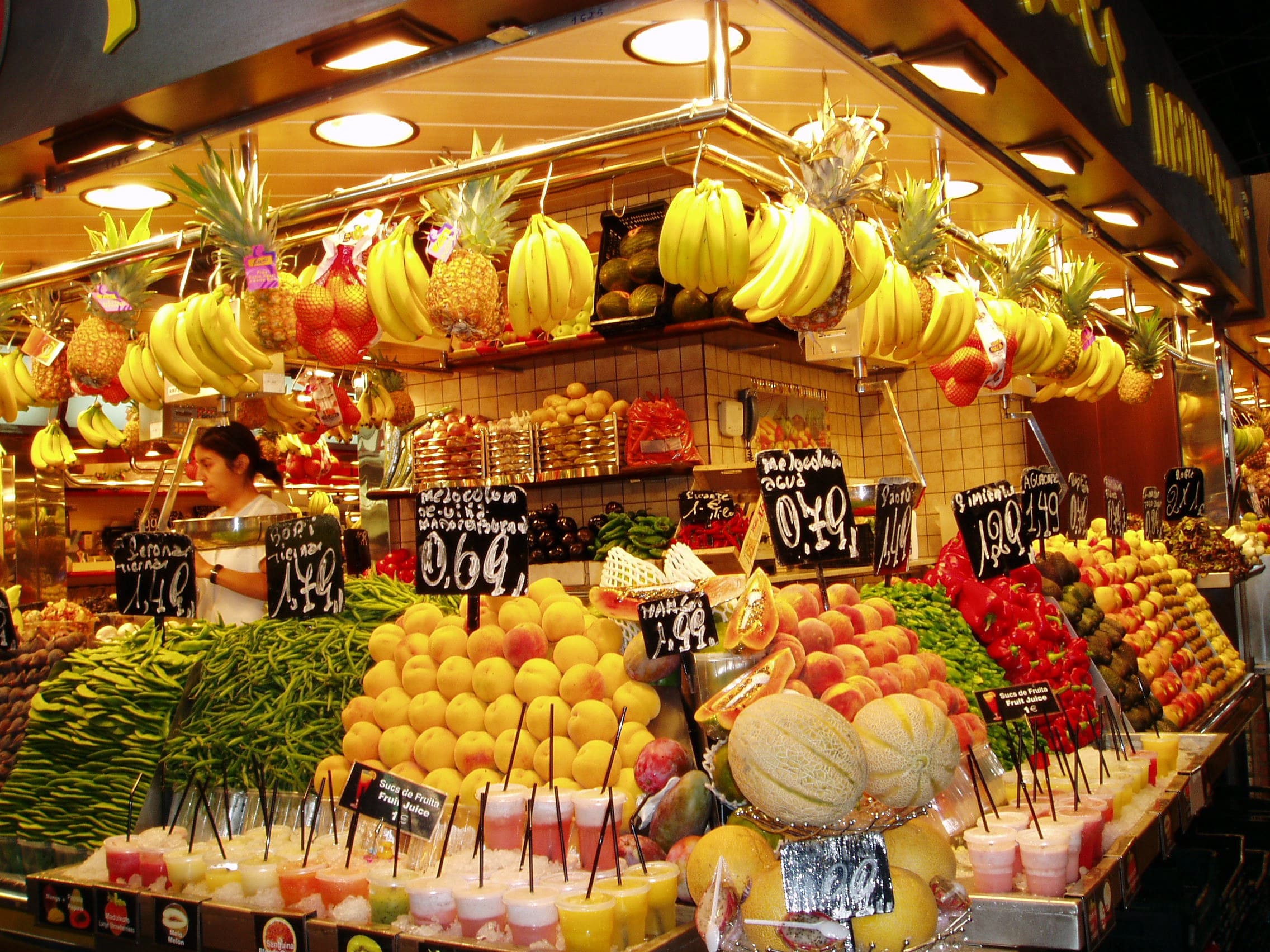
Barcelona’s Boquería Market is one of the most famous in the country, but if you’re looking to get away from the crowds, go to the Mercat de Santa Caterina. This market is vibrant and colorful both inside and out. With its eye-catching multicolored ceramic roof, stalls filled with organic produce, and cozy bars selling all types of tapas, it’s a worthy stop.
The Triana Market in Sevilla is a wonderful place filled with locals and visitors alike, however we also recommend the Mercado de la Feria. Located near a medieval church and a Moorish Palace, this market has a warm, local ambience and includes a sleek bar where you can enjoy local delicacies.
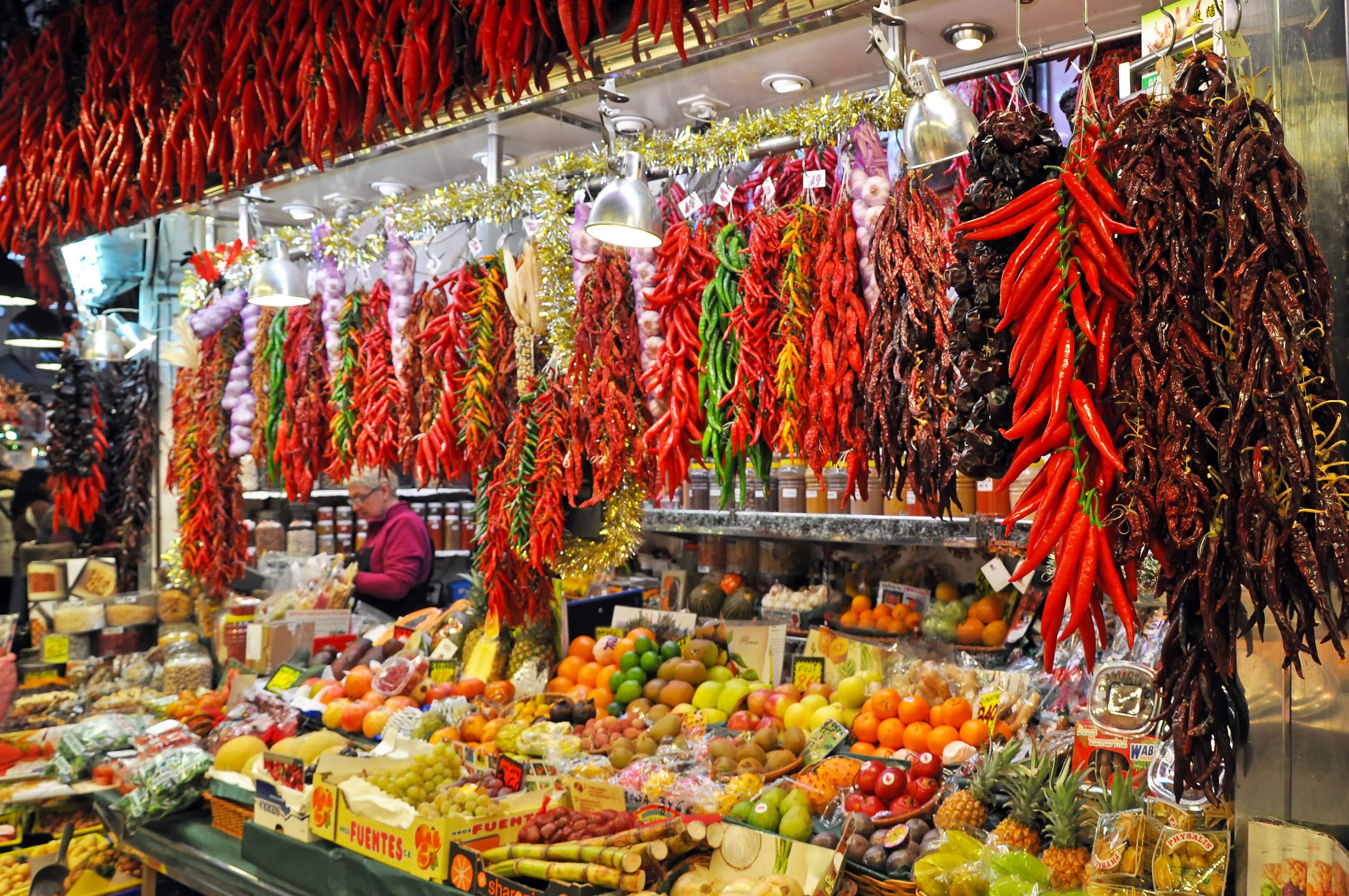
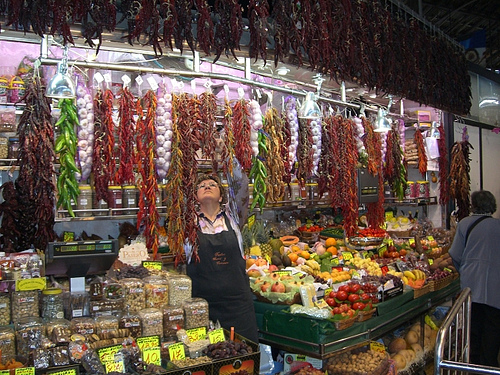
The Mercat Central in Valencia is a must see housed in a modernist building with stained glass windows. This massive market, located close to the Cathedral in the old quarter, is one of the most iconic places in the city. But that doesn’t mean it’s lost its familiar charm; on the contrary, 8 of 10 visitors are locals.
In Málaga, the Mercado de Atarazanas opened in 1879 and was built in a Neo-Arabic style. The main façade retains an original stone archway from the Nasrid Dynasty, while the opposite end contains a giant, stunning stained-glass masterpiece. Inside, see the fresh fish caught in local waters or have a glass of wine at one of the small bars.
Finally, the Mercado de Abastos in Santiago de Compostela is the second most visited site after the Cathedral. It is still located in the same site as the town’s original market dating from 1873. It is composed of a series of long stone structures like hallways, with stalls inside and outside. Here you can appreciate the variety of local seafood, as well as freshly baked breads and produce.
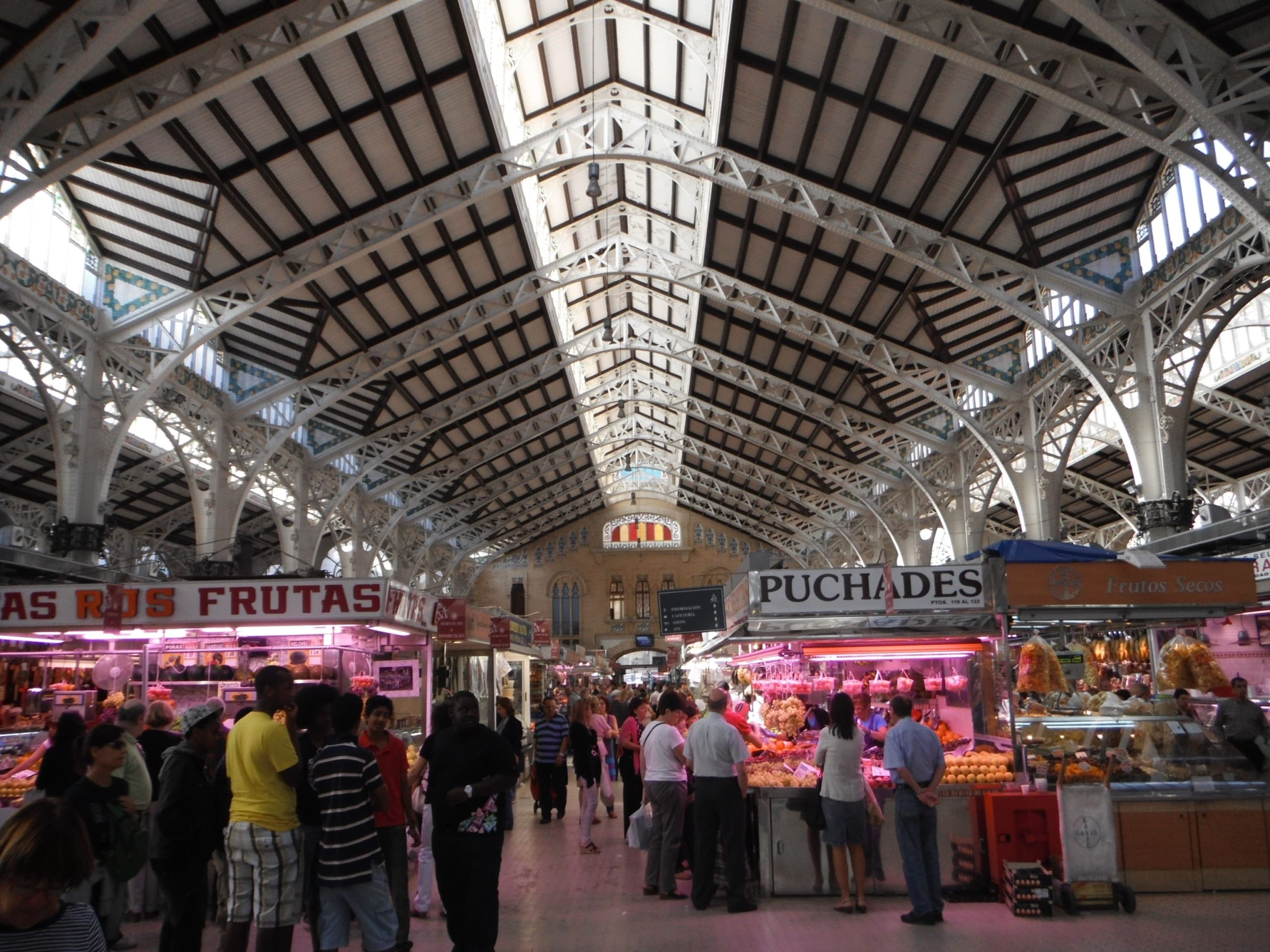
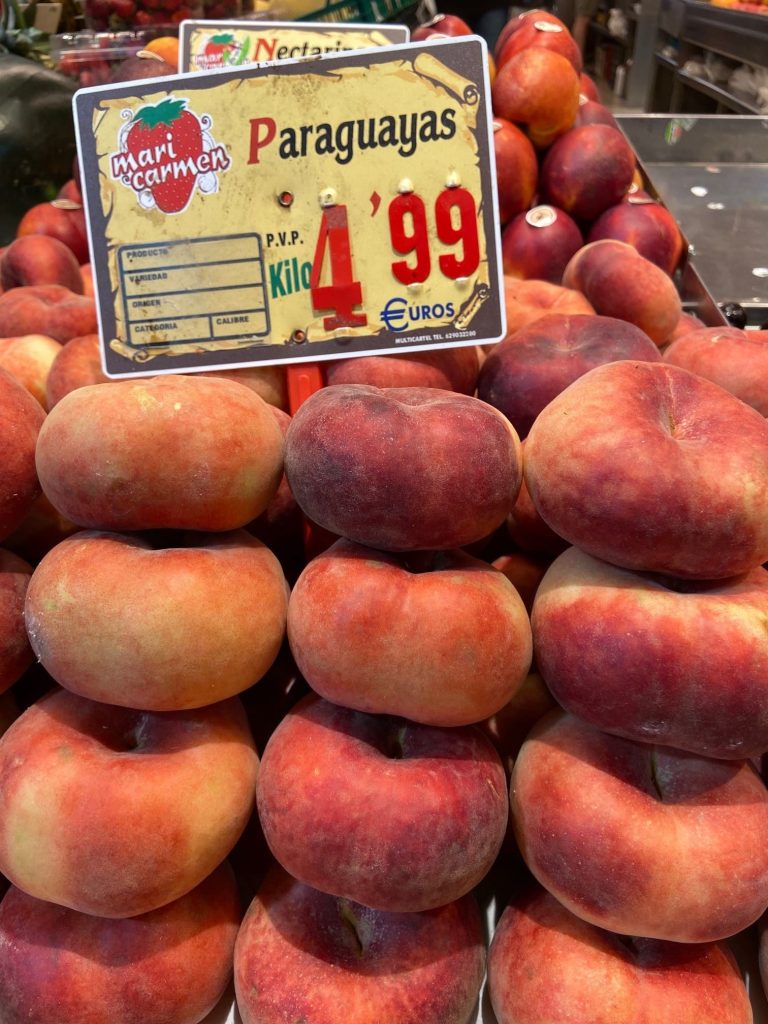
These vibrant markets are usually open in the mornings (and closed on Sundays) so make sure to go early and have a tapa with some wine before heading out to lunch.
